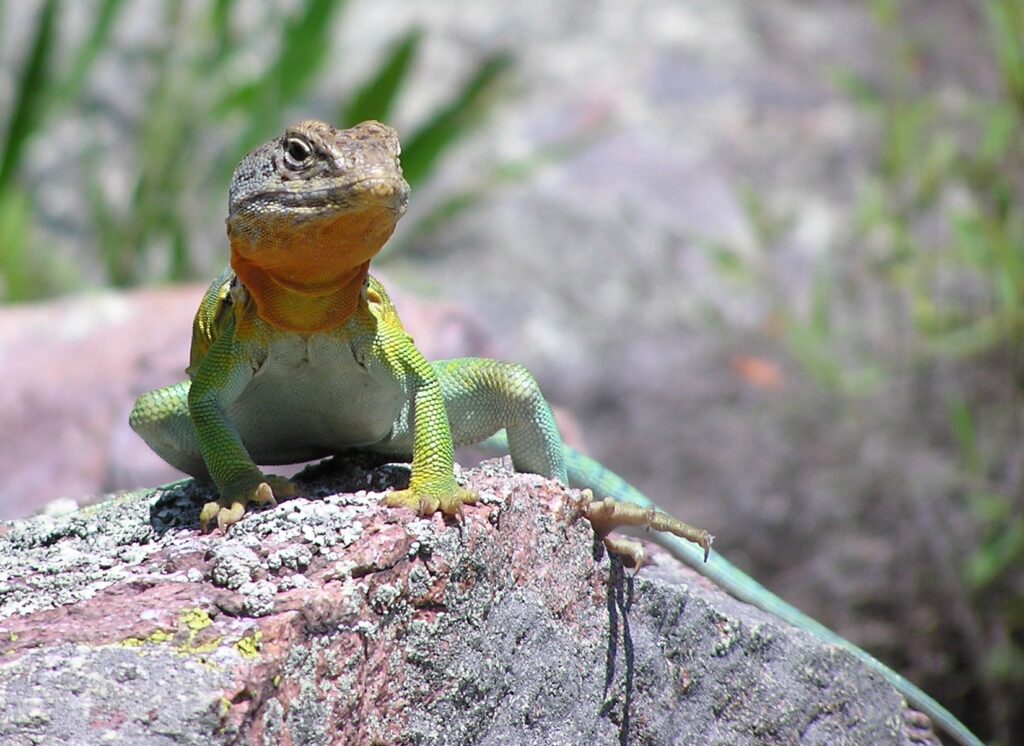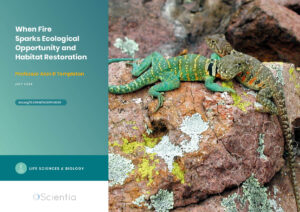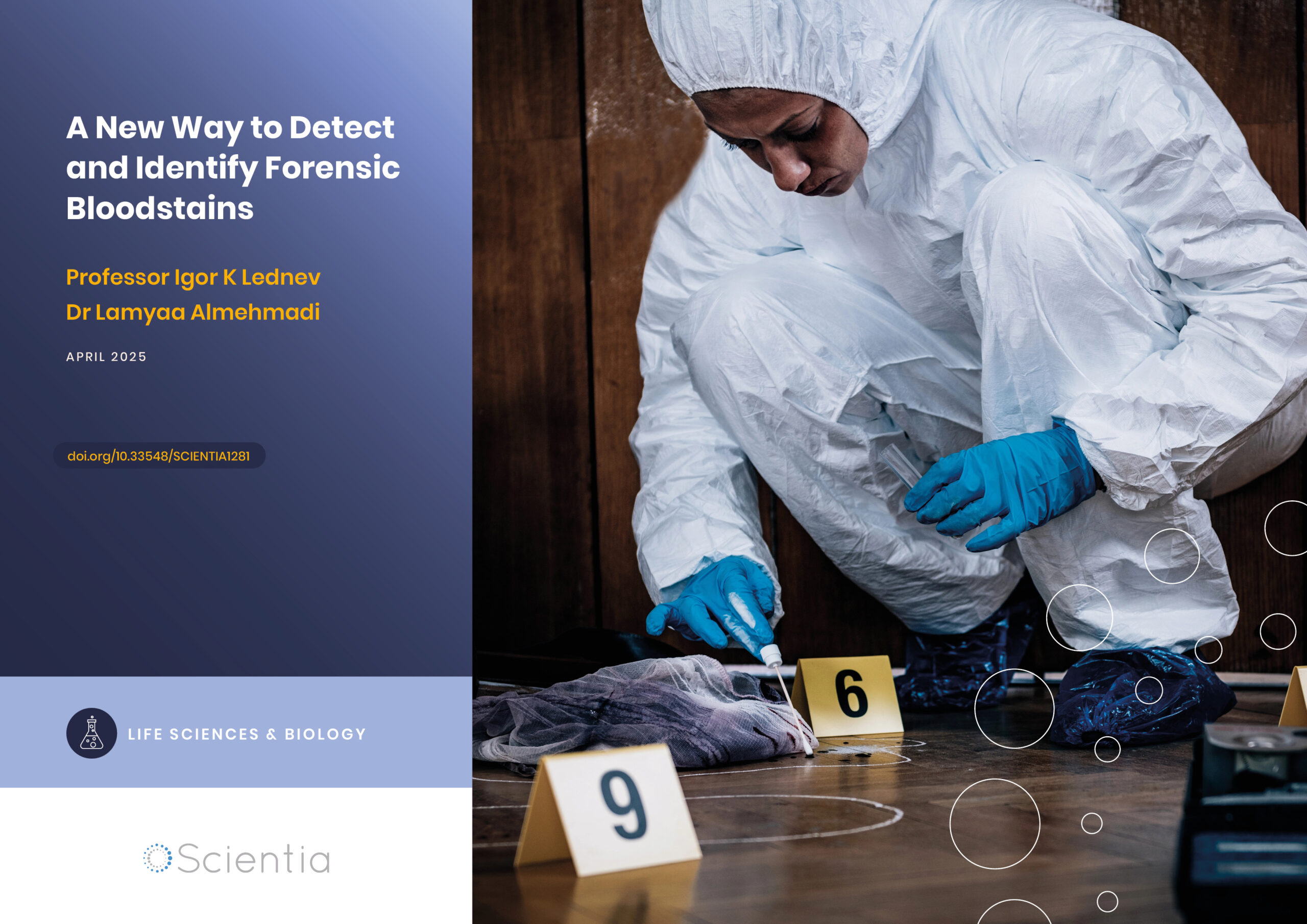Professor Alan Templeton | When Fire Sparks Ecological Opportunity and Habitat Restoration
How far would you be willing to go to save an endangered species? Would you consider burning part of a forest as a solution? As unconventional as it may sound, conservationists sometimes resort to such measures to restore lost habitats. One remarkable example is the efforts to save eastern collared lizards – and indeed the entire biological community in which they live – in the Ozarks, spearheaded by American geneticist and statistician Professor Alan Templeton of Washington University in St Louis, USA.
Eastern Collared Lizards and the Need for Conservation
The eastern collared lizards are endemic to unique habitats known as glades, which feature rocky terrain and sparse vegetation cover, creating hot, arid microclimate desert-like environments. These glades serve as ideal locations for basking and hunting for the lizards. The rocky landscape offers natural shelters, while the sparse vegetation facilitates unrestricted movement and ample foraging opportunities for the species.
In the Ozarks, the glades are nestled within the woodlands of Missouri, maintained by occasional forest fires that prevent trees from encroaching on the high terrains of the glades. However, the introduction of fire suppression measures in the area resulted in woodland encroachment on the high terrains. During this period, the overgrown woodlands acted as obstacles, preventing the natural movement of collared lizards between glades, and hindering their ability to disperse and colonise new areas. The glades themselves were encroached upon by woody species, gradually losing area and sometimes becoming completely shaded out. This ultimately led to the extinction of collared lizards in some regions.
To address this issue, a conservation programme involving translocation and habitat restoration was initiated in 1982 by Professor Alan Templeton of Washington University in St Louis, USA. This programme included prescribed periodic burning to mimic natural fire regimes and restore the ecological balance of the woodlands. This restoration process aimed to restore glade habitats and to create a more open woodland that would facilitate the movement of collared lizards between glades, promoting population growth and stability.
Intricacies of Species Reintroduction
As the eastern collared lizard population faced significant declines in the Ozarks, conservation efforts turned to introducing new populations into various glades across the region. Initially, the focus was on managing the existing habitat patches where the lizards were still found. However, these efforts proved insufficient to prevent the population from facing extinction threats. One critical issue that emerged was the erosion of genetic variation within the collared lizard population. This loss of genetic diversity stemmed from the small population sizes on the ever-shrinking glades and the inability of lizards to disperse through the unburned forests with their heavily shaded, woody understories.
Extensive monitoring efforts were implemented, focusing on the age and gender-specific survival and reproductive abilities of the lizards. This monitoring allowed researchers to track population dynamics and identify potential factors contributing to genetic and population size decline.
The initial restoration focused only on clearing and burning glades and then translocating lizards into the restored glades.
During the pre-burning phase of habitat management, it became evident that the founding population of eastern collared lizards remained confined to their respective glades, with limited movement between glades hindering gene flow and leading to reduced diversity within each population. In 1990 Professor Templeton was appointed to a multi-agency task force on the Biodiversity of Missouri. The recommendations of the task force were published in 1992 and included prescribed burning of Ozark forests. Permission to burn was granted in 1993, and landscape-level fire management was introduced in 1994. A pivotal shift then occurred. This innovative approach opened opportunities for lizards to venture into new glades, sparking a notable surge in population size and the colonization of new glades.
Despite this progress, dispersal remained somewhat constrained for adults, primarily limited to adjacent glades. A significant finding from a 2013 study by Professor Templeton and his colleagues shed light on the dynamics of population expansion. They observed that young hatchlings and one-year-old lizards were often the pioneers in establishing new, unoccupied glades. While this led to an initial overall decline in genetic diversity within individual newly colonized glades and fostered greater differentiation between glades, ultimately, genetic diversity increased within glades, emphasising the importance of dispersal in shaping genetic structure and diversity across the landscape.

The Stable Metapopulation Period
Following the post-burning colonisation phase, the eastern collared lizard population exhibited remarkable adaptability, entering a stable period where the rate of local glade extinction was balanced by the rate of glade recolonisation. This stable phase witnessed a relatively constant population size and continued dispersal, particularly among the new babies, who were found to be able to cover greater distances through a burned forest.
The increased movement of baby lizards was key in mixing genes between different glades and colonizing nearby mountains. As the young lizards explored further, they not only added to the genetic variety of nearby areas but also linked distant habitats together. It was like they were building genetic bridges, making sure all the lizard families stayed connected and healthy across the whole landscape.
Factors Influencing Survival and Reproduction
Professor Templeton’s study, published in Population Ecology, revealed significant changes in life history traits over time, particularly due to prescribed woodland burning. The life history of the lizards during the pre-burn phase was characterized by only a few older individuals reproducing. This pattern was not predictive of their ability to colonize and grow after the implementation of prescribed burning. The shift from isolation to colonisation phases led to increased dispersal, earlier reproduction, and reduced survival among older individuals, affecting both male and female lizards. As the population transitioned to a stable metapopulation phase, there were further shifts. Dispersal probabilities changed significantly based on age and sex. Overall survival declined, especially among younger males with reduced reproductive rates. Despite these changes, overall reproductive values increased for both sexes, indicating a move towards a more stable population structure.
In the study, females showed more flexibility in life-history traits compared to males. While in the colonizing phase, they reproduced younger, during the stable phase, females tended to be older. Given the differing energy demands of reproduction between males and females, this variation in flexibility is not surprising.
Males, on the other hand, showed greater adaptability in generation time, attributed to increased reproductive opportunities for younger males during the colonisation phase when they faced less competition from older males. This pattern remained consistent during the subsequent transition to a stable metapopulation period.
Benefits and Implications of Restoring Ecological Processes
Professor Templeton and his team have closely watched efforts to conserve and restore the eastern collared lizard population in the Ozarks. Their recent findings reveal how these conservation efforts, including prescribed burnings, have improved lizard survival and reproductive rates. Moreover, the restoration measures also facilitated the reintroduction of other species, like elk, which had previously gone locally extinct in this region. Understanding these changes is crucial, especially in light of environmental shifts like climate change. This work underscores the importance of managing ecosystems at a landscape level for effective species conservation. By restoring fundamental ecological processes, such as controlled burning, ecosystems can recover, benefiting a range of species and promoting biodiversity conservation.
SHARE
DOWNLOAD E-BOOK
REFERENCE
https://doi.org/10.33548/SCIENTIA1039
MEET THE RESEARCHERS

Professor Alan R Templeton
Department of Biology
Washington University
St Louis, MI
USA
Professor Alan Templeton is the Charles Rebstock Emeritus Professor of Biology at Washington University in St Louis. His research career spans over four decades, representing a significant contribution to the fields of genetics, evolutionary biology, and biodiversity. He applies evolutionary principles to a diverse array of scientific inquiries, from clinical genetics, where he investigates the genetic underpinning of complex diseases like coronary artery disease and end-stage kidney disease, to conservation biology, focusing on the genetic population structure of endangered or threatened species. He obtained his PhD from the University of Michigan and went on to hold various academic positions, including Assistant Professor at the University of Texas at Austin and Professor at Washington University. His extensive international engagements include visiting positions at institutions such as the University of Sao Paulo in Brazil, the University of Oxford in the UK, the Medical School of the Technion Institute of Technology in Israel, and the University of Haifa in Israel.
CONTACT
E: temple_a@wustl.edu
W: https://biology.wustl.edu/people/alan-templeton
W2: https://sites.wustl.edu/templeton/

Dr Jennifer Neuwald
Colorado State University
Fort Collins, CO
USA
Dr Jennifer Neuwald is an Associate Professor in Biology at the Colorado State University (CSU). Her research is focused on the intersection of environmental variation and evolutionary processes in natural populations, especially concerning conservation biology. From understanding the processes that affect the reintroduction success of the eastern collared lizard to evaluating how climatic change influences demographic traits in the Island scrub jay, her research aims to identify broader patterns that can be applied to species facing a rapidly changing planet. She is also a discipline-based education researcher working to identify methods to improve learning in higher education. Dr Neuwald completed her MS at San Diego State University and PhD at Washington University in St Louis before her postdoctoral research at Iowa State University as well as with multiple agencies. She is now Associate Professor in Biology and Assistant Director of the Graduate Degree Program in Ecology at CSU, and teaches various courses in living systems, evolution, herpetology, and conservation genetics.
CONTACT
E: jennifer.neuwald@colostate.edu
W: https://www.biology.colostate.edu/person/?id=51C3CC0EE9878B7C99D0B4733976E950&sq=t
X: @jneuwald
LinkedIn: linkedin.com/in/jennifer-l-neuwald-37864419

Dr Amy K Conley
SUNY College of Environmental Science and Forestry
Syracuse, NY
USA
Dr Amy Conley joined the Templeton lab in 2007 as a graduate student. She received her PhD in Evolution, Ecology, and Population Biology from Washington University in St. Louis in 2013. Her research at the Templeton lab focused on the relative impacts of social structure and landscape heterogeneity on patterns of dispersal and genetic variation in a metapopulation of the Eastern collared lizard in the Missouri Ozarks. Currently, Dr Conley is a research scientist with the New York Natural Heritage Program at the SUNY College of Environmental Science and Forestry, working on models of species distribution for rare species and modelling dispersal and invasion risk for invasive species in New York.
CONTACT
E: aconley@esf.edu
W: https://www.nynhp.org/staff/amy-conley/
FUNDING
National Science Foundation
Missouri Department of Conservation
National Parks Service
The Nature Conservancy
Canon National Parks Science Scholars Fellowship
FURTHER READING
AR Templeton, JL Neuwald, AK Conley, Life history changes in the eastern collared lizard in response to varying demographic phases and management policies, Population Ecology, 2024, 66(1), 53-67. DOI: https://doi.org/10.1002/1438-390X.12162
JL Neuwald, AR Templeton, Genetic restoration in the eastern collared lizard under prescribed woodland burning, Molecular Ecology, 2013, 22(14), 3666–79. DOI: https://doi.org/10.1111/mec.12306

REPUBLISH OUR ARTICLES
We encourage all formats of sharing and republishing of our articles. Whether you want to host on your website, publication or blog, we welcome this. Find out more
Creative Commons Licence (CC BY 4.0)
This work is licensed under a Creative Commons Attribution 4.0 International License. 
What does this mean?
Share: You can copy and redistribute the material in any medium or format
Adapt: You can change, and build upon the material for any purpose, even commercially.
Credit: You must give appropriate credit, provide a link to the license, and indicate if changes were made.
SUBSCRIBE NOW
Follow Us
MORE ARTICLES YOU MAY LIKE
A New Way to Detect and Identify Forensic Bloodstains
Accurately identifying bodily fluids at crime scenes is vital to aid forensic examinations and obtain information for use in criminal proceedings. However, collecting viable material for analysis can be challenging, especially if samples are difficult to access or the amount is minute. Dr Lamyaa Almehmadi and Professor Igor K Lednev at the University at Albany, State University of New York, USA, have introduced a new technique to assist in analysing bloodstains for forensic examination without compromising sample integrity.
Training Deep Learning AI to Predict microRNA-Gene Interactions
Non-coding microRNAs (miRNAs) have important regulatory functions but are also implicated in various diseases. Mr Seung-won Yoon, PhD candidate at Chungnam National University, Republic of Korea, is training deep learning AI models to predict miRNA-gene associations. His research has implications for understanding disease pathogenesis, particularly cancer, and repurposing drugs for untreatable diseases.
Dr Terrence Deacon | Challenging the RNA-World: Deacon’s Semiotic Approach to the Origin of Life
Challenging the established RNA-World Model, Dr Terrence Deacon of the University of California, Berkeley, provides an exciting new approach to understanding biological processes and the emergence of information in biological systems.
Proteins on the Move: Gateways into Mitochondria
Eukaryotic translation initiation factor 5A (eIF5A) is an essential translation factor found in nearly all living organisms. It helps ribosomes, the molecular machines that build proteins, in translating proteins containing specific amino acids. The lack of eIF5A is related to various diseases as well as ageing. Although eIF5A is known to be essential for mitochondrial function, the specific mechanism linking them has not yet been described. Professor Paula Alepuz and former PhD student Marina Barba-Aliaga (University of Valencia) work with Professor Brian M Zid (University of California San Diego) to investigate the fascinating world of eIF5A activity and its connection to mitochondria.





